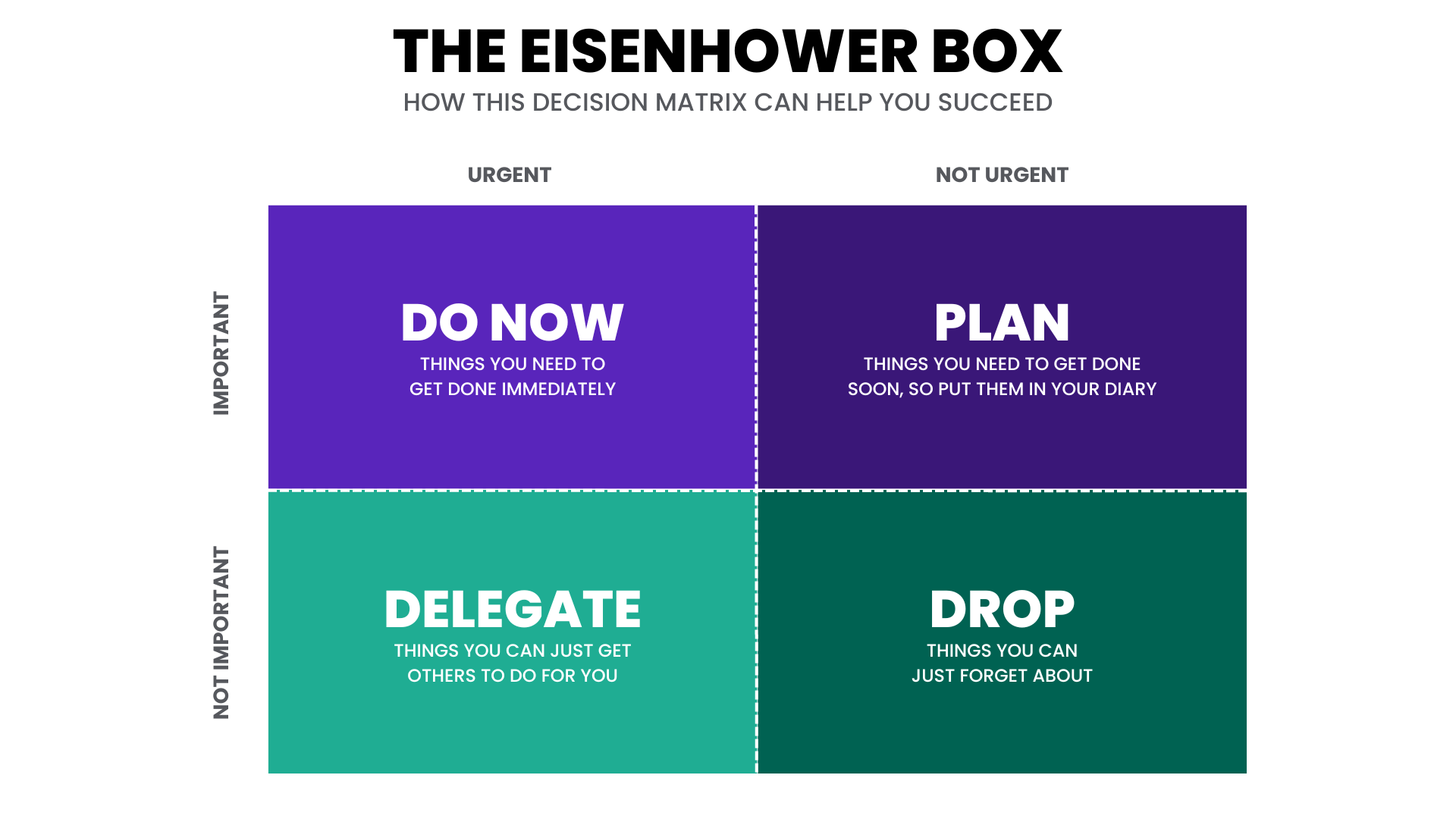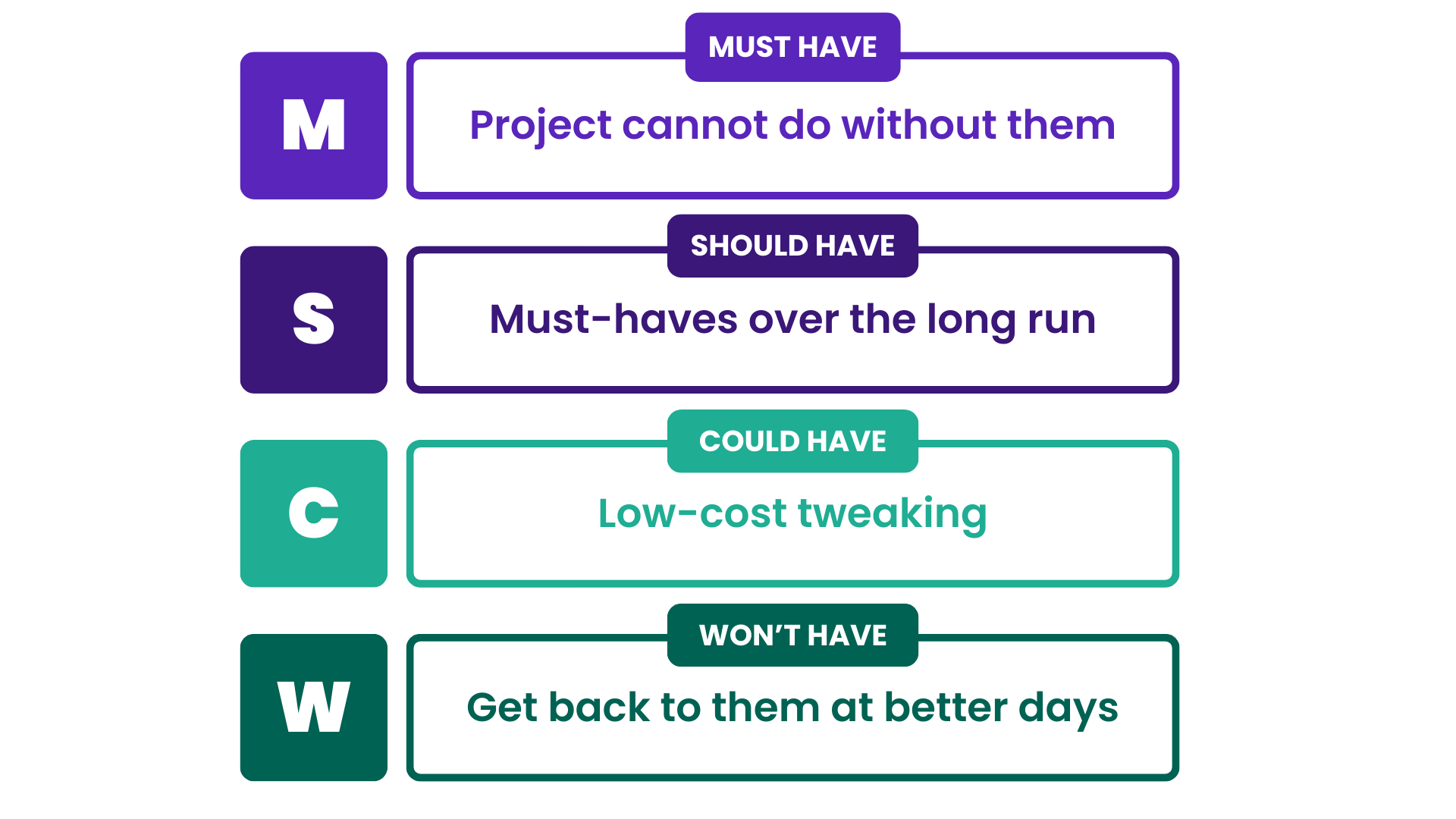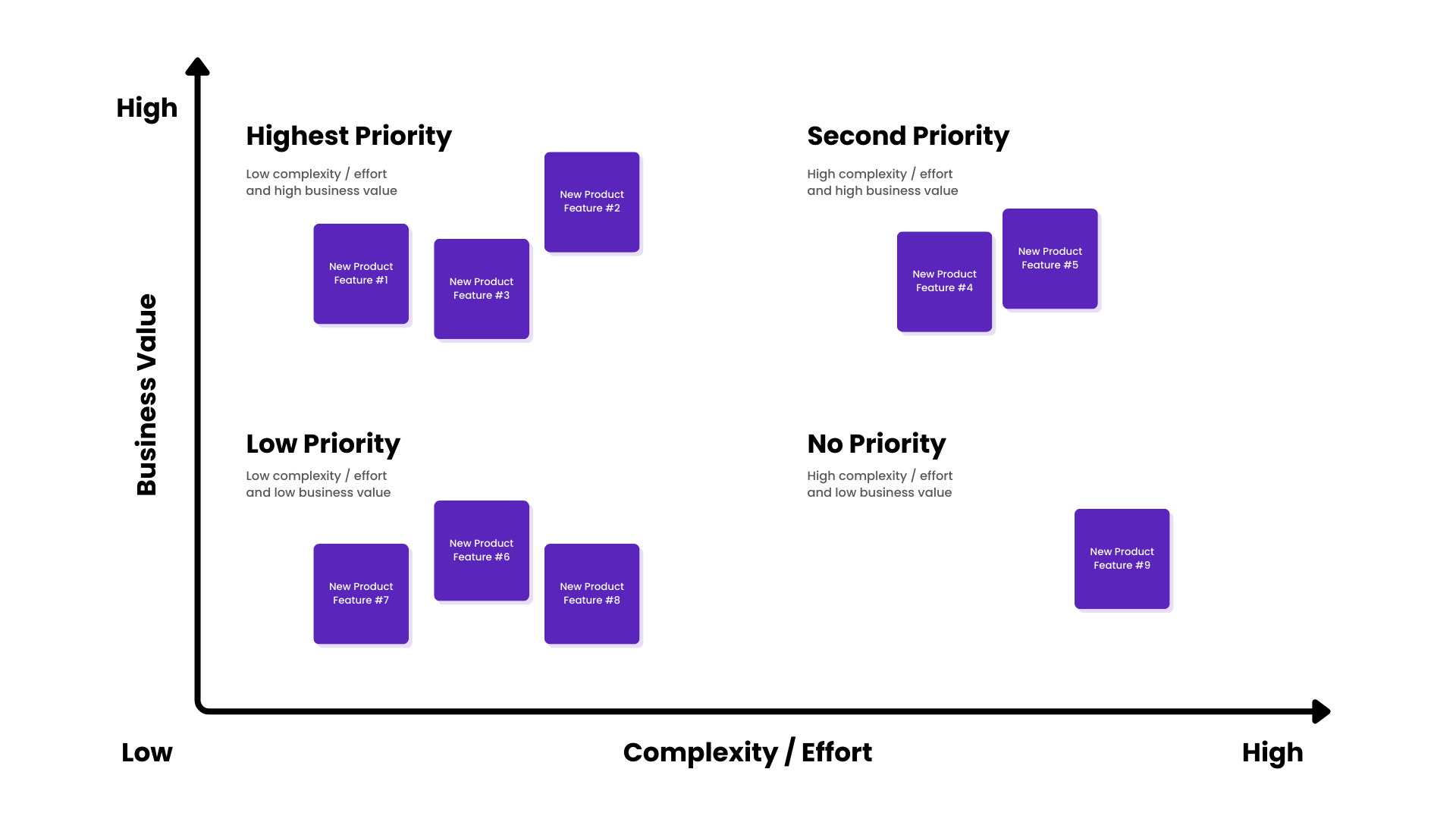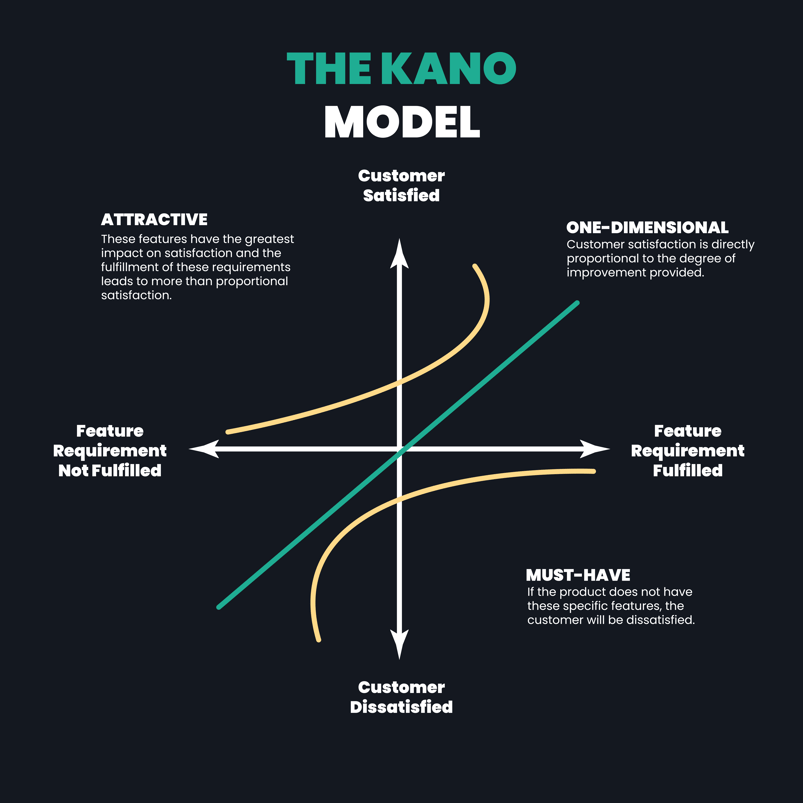Here are 5 prioritization techniques to help you identify your most important processes.
The Challenge of Prioritizing Processes
In an always-on, hyper-connected world, every business process clamors for attention, shouting from the rooftops, "I’m indispensable!" But that's the rub. When everything seems pivotal, the actual priorities can get drowned out in the noise.
Understanding the Importance of Making the Right Choices
In a complex organizational landscape, the act of choosing which processes to prioritize can be your golden ticket to sustainable growth. It’s like navigating a maze; the right turns can mean the difference between wandering aimlessly and finding your way to the treasure.
The Art of Prioritization
The Balance Between Urgency and Importance
Feeling like a firefighter putting out infernos all day? A relentless focus on urgency can blind you to underlying issues. Just as a skilled gardener knows when to prune and when to fertilize, striking the right balance is key.
Not All Processes Are Created Equal: The Need for a Hierarchy
Creating a process hierarchy is like setting up your chessboard. Each piece has a role, and understanding those roles can make you a master of the game rather than a pawn.
Five Prioritization Techniques to Streamline Your Workflow
The Eisenhower Box: Distinguishing Urgent vs. Important
This technique is an oldie but a goodie. Picture your tasks as clothes in a suitcase. There's limited space, so you need to decide what’s essential for your journey and what can stay in the wardrobe for another occasion.
The Eisenhower Box is a simple yet effective method for prioritizing tasks. It helps you distinguish between urgent and important tasks, allowing you to focus on what truly matters. Just like packing a suitcase, you have limited space in your schedule, so it's crucial to determine which tasks are essential for your journey and which can be put aside for later. By using this technique, you can ensure that you allocate your time and energy efficiently, making the most of each day.

The Pareto Principle: Focusing on the Vital Few
Don't get lost in the weeds. This principle encourages you to find the 20% of processes that deliver 80% of your results. It's the equivalent of zeroing in on the cornerstone rather than laying bricks at random.
By focusing on the most impactful processes, you can maximize your efficiency and productivity. Instead of getting caught up in minor details, prioritize the tasks that will yield the greatest outcomes. This approach allows you to build a solid foundation for success, rather than scattering your efforts aimlessly.

The MoSCoW Method: Must-Have, Should-Have, Could-Have, Won’t-Have
The MoSCoW Method is a prioritization technique used in management, business analysis, project management, and software development to reach a common understanding with stakeholders on the importance they place on the delivery of each requirement.
The MoSCoW method helps in ensuring that all stakeholders have a clear understanding of what is important and what can be left out if necessary.
Think of your processes as guests at a dinner party. The 'Must-Haves' are your closest friends and family, the 'Should-Haves' are good acquaintances, and the 'Could-Haves' are people you enjoy but won't miss terribly. 'Won’t-Haves' didn't make the cut this time.
Let's apply this analogy to a business scenario.
Suppose you're launching a new product. The 'Must-Haves' could be the essential features that your product absolutely needs to function and meet customer expectations. These are non-negotiable and critical for the success of the product.
The 'Should-Haves' might be additional features that would enhance the user experience and give your product an edge over competitors, but their absence wouldn't make the product fail.
The 'Could-Haves' are nice-to-have features that would be beneficial to include if time and resources permit. They can improve the product but aren't crucial for its launch or functionality.
Lastly, the 'Won’t-Haves' are those features or ideas that you've considered but decided not to include in this version of the product. They may be revisited in future updates or versions.

Value vs. Complexity Chart: Finding the Right Balance
Think of your processes as different dishes on a menu. Just like in a restaurant, some dishes are complex and require a lot of effort to prepare, but they offer high returns in terms of taste and customer satisfaction. On the other hand, there are also simple dishes that may not be as elaborate, but they still manage to satisfy customers.
In order to create a well-rounded menu that caters to all palates, it's important to strike a balance between complex and simple dishes. This is where the value vs. complexity chart comes into play. It allows you to gauge the effort-return ratio of each process and make informed decisions about which ones to prioritize.
By plotting your processes on this chart, you can visually assess their value and complexity. Processes that fall in the top right quadrant are both valuable and complex, offering high returns but requiring significant effort. These are the "delicious yet complex" dishes that are worth investing time and resources in.
On the other hand, processes in the bottom left quadrant are simple and have low complexity, but they may not provide as much value. These are the "simple yet satisfying" dishes that may not require much effort, but they still contribute to overall customer satisfaction.
The goal is to find a balance between these two extremes. You want to have a mix of complex and simple processes that collectively deliver value to your organization. This way, you can ensure that you're not overwhelming your team with overly complex tasks, while still providing enough value to meet the needs of your customers.
So, next time you're evaluating your processes, consider using the value vs. complexity chart to guide your decision-making. It will help you create a well-balanced menu of processes that pleases all palates and maximizes the overall success of your organization.

The Kano Model: A Framework for Enhancing Customer Satisfaction
Have you ever encountered the concept of a surprise and delight strategy? The Kano Model is an invaluable framework that aids in pinpointing aspects that not only fulfill customer expectations but surpass them, elevating your service from simply satisfactory to genuinely unforgettable.
So, what exactly is the Kano Model?
The Kano Model is a theory of product development and customer satisfaction conceptualized by Professor Noriaki Kano. It categorizes customer preferences into five distinct groups: Attractive, One-Dimensional, Must-Be, Indifferent, and Reverse. This model assists businesses in comprehending how various product features contribute to customer satisfaction.
By employing this model, businesses can prioritize features based on their influence on customer satisfaction, thereby crafting products or services that not only meet but exceed customer expectations.

Applying Prioritization in the Real World
Case Studies: Successful Prioritization in Action
In this section, we will delve into some real-life examples of companies that have successfully implemented prioritization techniques. These companies have managed to transform their operations from chaotic to streamlined, resulting in substantial improvements in efficiency and customer satisfaction.
- Tech Titan Inc: Tech Titan Inc was grappling with a high volume of customer inquiries and support tickets. They realized that their existing approach of handling requests on a first-come, first-served basis was not efficient. By implementing a prioritization system, they were able to categorize incoming requests based on urgency and impact. This allowed them to allocate resources more effectively and address critical issues promptly. As a result, the company experienced a significant reduction in response times and an increase in customer satisfaction.
- Project Pioneers Ltd: Project Pioneers Ltd was facing challenges in managing multiple projects simultaneously. They often found themselves overwhelmed and unable to meet deadlines. To overcome this, they adopted a prioritization framework that involved assessing the importance and urgency of each project. By focusing on high-priority tasks and allocating resources accordingly, they were able to complete projects more efficiently and deliver them on time. This not only improved their overall productivity but also enhanced their reputation for delivering quality work.
- Innovation Architects Corp: Innovation Architects Corp was struggling with a lack of clarity and alignment in their product development process. They had numerous ideas and features in the pipeline, but limited resources to execute them all. Through the implementation of a prioritization methodology, they were able to evaluate each idea based on strategic fit, market demand, and potential impact. This enabled them to prioritize the most valuable initiatives and allocate resources accordingly. As a result, they were able to bring innovative products to market faster and stay ahead of their competitors.
These case studies highlight the power of effective prioritization in driving operational efficiency and customer satisfaction. By adopting prioritization techniques tailored to their specific needs, these companies were able to overcome challenges, streamline their operations, and achieve significant gains.
Identifying Potential Pitfalls
Navigating any path, whether it's straight or winding, can come with its fair share of challenges. It's important to be aware of the potential pitfalls that lie ahead so that you can prepare yourself and avoid them. By understanding these common obstacles, you can develop effective strategies to overcome them.
1. Lack of Planning
One of the most common pitfalls is a lack of planning. Without a clear roadmap, it's easy to get lost or make wrong turns along the way. To avoid this, take the time to carefully plan your journey. Set specific goals, outline the steps needed to achieve them, and create a timeline for completion. This will help you stay focused and on track.
2. Poor Time Management
Another pitfall to watch out for is poor time management. Time is a valuable resource, and if not managed effectively, it can slip away quickly. To avoid this, prioritize your tasks and allocate time for each one. Break larger tasks into smaller, manageable chunks, and set deadlines for yourself. Use tools like calendars or task management apps to stay organized and ensure you're making progress.
3. Lack of Flexibility
Rigid thinking and an unwillingness to adapt can also lead to pitfalls. In today's rapidly changing world, it's crucial to be flexible and open to new ideas and approaches. Embrace change and be willing to adjust your plans as needed. This will allow you to navigate unexpected obstacles and seize opportunities that may arise along the way.
4. Failure to Seek Support
Trying to tackle everything on your own can be overwhelming and lead to burnout. Don't be afraid to seek support when needed. Surround yourself with a network of mentors, colleagues, or friends who can offer guidance and assistance. Collaboration and teamwork can help you overcome challenges more effectively and provide fresh perspectives.
5. Fear of Failure
Fear of failure can be a major stumbling block on your path to success. It can hold you back from taking risks and trying new things. Embrace failure as a learning opportunity and a stepping stone towards growth. Remember that setbacks are a natural part of any journey, and they can often lead to valuable lessons and insights.
By being aware of these potential pitfalls and implementing strategies to avoid them, you can navigate your path with confidence and resilience. Remember to plan ahead, manage your time effectively, stay flexible, seek support when needed, and embrace failure as an opportunity for growth. With these tools in your arsenal, you'll be well-equipped to overcome any obstacles that come your way.
The Role of Tools and Technology
How Platforms like HubSpot and Monday Can Aid in Prioritization
The right tech stack isn't a crutch; it's a jetpack. Sophisticated platforms can offer invaluable data analytics and process automation capabilities, arming you with the intelligence needed for effective prioritization.
Unifying Operations: The Seamless Integration of Teams and Tech
Imagine your organization as an orchestra. Each instrument, no matter how different, needs to play in harmony to produce a beautiful symphony. The same goes for your teams and technology. Harmony equals high performance.
Empowering Your Team with Knowledge and Training
Overcoming Operation Limitations: From Chaos to Clarity
Training is to your team what oil is to a well-oiled machine—utterly essential. Well-crafted training programs can transform your team members from mere operators to skilled conductors of your organizational symphony.
Building a Culture of Continuous Learning and Improvement
Evolution is not an event but a process. Cultivating a learning mindset across your organization can set you on a journey of endless refinement and growth, much like a tree that grows stronger with each season.
Opt360: Navigating Complexities in Process Prioritization
In the maze of process prioritization, Opt360 acts as your guide, providing a structured framework to align intelligence, performance, technology, and enablement. It encourages data-driven decision-making, streamlines operational handoffs, and fosters team development through tailored training. This holistic approach ensures that your organization isn't just reacting to daily challenges but is also building long-term resilience.
For those looking to deepen their understanding of sustainable organizational growth, learn how Opt360's approach can offer valuable insights.
Conclusion
Embracing Intentional Direction: Grow Today, Build for Tomorrow
If you don’t prioritize your life, someone else will. The same goes for business processes. Effective prioritization allows you to seize control, steering your organization towards not just survival but meaningful growth.
Final Thoughts: Prioritizing for Success and Sustainability
Remember, prioritization isn’t a “set it and forget it” game. Like steering a ship, constant adjustments are necessary to navigate the ever-changing waters of the business landscape.

